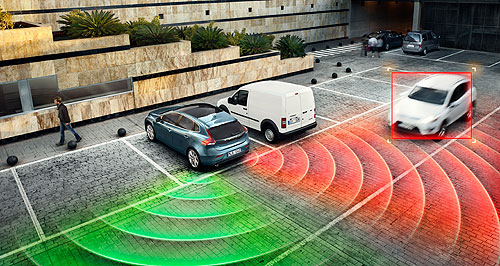News - General News - SafetyStage almost set for communicating carsCar talk: Vehicle-to-vehicle and autonomous technology could be easier to roll out than anticipated, says ITS Australia CEO Susan Harris. Minor legal changes needed for car-to-car tech and driverless vehicles in Oz11 May 2015 By IAN PORTER AUSTRALIAN laws will require only a minor “tweaking” to prepare for the introduction of car-to-car communications and autonomous vehicles, according to a leading advocate for intelligent transport systems. It is also expected the federal government will receive an official recommendation to set aside a specific part of the radio spectrum to enable the introduction of co-operative intelligent transport systems (C-ITS) before the end of this year. Intelligent Transport Systems (ITS) Australia chief executive officer Susan Harris said it was unlikely fresh legislation will be required for the introduction of the self-driving tech. “I don’t think we will need new legislation,” she said. “I think it will just be some tweaking of existing legislation, just fine tuning what is already there.” ITS Australia is an industry body formed to promote the adoption of smart transport technology and to advise government on its implementation. Ms Harris was speaking ahead of this week’s Australian Intelligent Transport Systems Summit, to be held in Melbourne. In 2016 Australia will host the annual ITS World Congress, which will bring around 7000 people to Melbourne. Ms Harris said the transport industry is currently waiting on a report from the National Transport Commission, which is examining the regulatory issues around ITS technology. “Then we will know how much change we will really need to make. We’re thinking it’s fairly modest. “We’ve got a level of automation in our vehicles today and the sky is not falling.” Ms Harris was also confident the necessary frequency on the radio spectrum would be permanently set aside to allow the adoption of C-ITS. At present the 5.9gH frequency has been placed under an embargo with a view to it being dedicated to ITS use. “We are in a good position in Australia as opposed to the US, where a number of people have designs on the 5.9gH frequency and want to share it with ITS. “We are quietly going along. It’s a process that has been going for some years. We expect to secure the frequency by the end of this year.” Ms Harris noted that Daimler, last week, unveiled its first autonomous truck, the Inspiration, a big rig that has been granted permission to be tested in the American state of Nevada. The Inspiration can stay in its lane on major highways and slow down or accelerate depending on traffic conditions, but drivers have to be in control when entering or leaving a highway. It will not be autonomous on other roads. But Ms Harris said that, while autonomous vehicles offered some advantages, a transport system needed ITS technology to achieve maximum efficiency. “We already have a level of autonomous operations, with city-stop systems that apply the brakes to prevent a crash in bumper-to-bumper traffic but also keep you moving along,” she said. “Connected vehicle technology and autonomous vehicle technology are compatible and we want them mingling together. “We don’t want robots out there just looking after themselves. We want them integrated because that is how we will be able to operate the vehicle fleet in a co-ordinated fashion and achieve the best results. “Analysts have calculated we will only achieve about a 40 per cent improvement in road throughput with automated vehicles but that an improvement of as much as 270 per cent can be achieved with co-operative ITS vehicles talking with each other and travelling in platoons.” And, while it is preferable for autonomous vehicles to also be communicating with other vehicles around it, instead of just avoiding them, Ms Harris said the new technologies could also benefit vehicles not fitted with C-ITS. “The great thing is you don’t have to be driving the latest vehicle with this technology to benefit. “You could actually be traveling behind a vehicle with ITS. They brake earlier than might be expected, you get the benefit of seeing the brake lights so you can then take action earlier. “So, other vehicles in the fleet get the benefits too, not just the vehicles with the new technology.”  Read more |
Click to shareGeneral News articlesResearch General News Motor industry news |
















Facebook Twitter Instagram